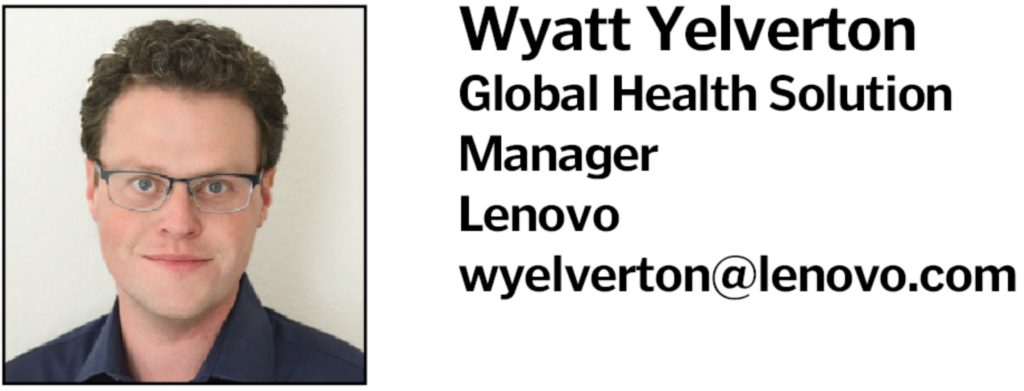PM360 asked experts in the various newest technologies impacting the pharma industry what is important to know in 2018 and beyond:
- What are the best applications for augmented reality (AR) in pharma?
- What are the best applications for virtual reality (VR) in pharma?
- What are the best applications for artificial intelligence (AI) in pharma?
- What other new technologies hold the most promise for pharma? Why?
 The global shift toward spatial computing and immersive AR, in which users can visualize photorealistic digital content and naturally interact with it using their hands, can be particularly impactful for pharma marketers. It is profoundly transformative to have digital content co-inhabit our physical space—and so much more powerful to literally reach out and touch virtual content, instead of being encumbered by a 2D monitor, mouse, and keyboard.
The global shift toward spatial computing and immersive AR, in which users can visualize photorealistic digital content and naturally interact with it using their hands, can be particularly impactful for pharma marketers. It is profoundly transformative to have digital content co-inhabit our physical space—and so much more powerful to literally reach out and touch virtual content, instead of being encumbered by a 2D monitor, mouse, and keyboard.
The pharma industry can take a page from medical schools and life sciences leaders, who are using immersive 3D medical imaging for patient communication and collaborative pre-operative planning, and expand its rollout of immersive AR applications. For example, pharma programs that help physicians demonstrate the positive impact of a prescription drug on disease conditions using 3D visualization can be a far more convincing way to engage patients in understanding their care. And clinician seminars with immersive 3D anatomy experiences can heighten the patient’s knowledge of a given disease.
As early applications debut with immersive AR in pharma-related training, marketing, and patient engagement, everyone will be able to share ideas more effectively—and experience them directly.
 Despite current limitations, the benefits of AR are real and represent a long-term strategic and operational advantage.
Despite current limitations, the benefits of AR are real and represent a long-term strategic and operational advantage.
Interactive digital models of real-world systems create an experiential learning tool unlike any other. Simulated environments enable users to translate knowledge into practice in a safe and cost-effective way. Training models can also be used for production environments simplifying user adoption and operational complexity. Extension via telecommunications (customization layered on top of a standard AR platform) then creates an interactive digital environment to connect remote experts with local users.
AR, such as in cellular manufacturing, can serve to improve workflow efficiency, safety, and accuracy for audits or research validation. Simple applications leverage worker checklists and manual compliance challenges for complex tasks. More advanced implementations perform automated verifications, track resource use, and deliver procedural insights through AI integration powered by sensors in the AR device or throughout the user’s environment.
AR can also be used as an empathy or conditioning tool to make the symptoms of debilitating disease relatable and impactful or illustrate how a product can improve a patient’s quality of life. In this way, AR drives knowledgeable decision-making and precise clinical application.
 In the life sciences industry, AR can be used for numerous purposes such as workshop-based applications, sales training home study, Medical Science Liaison (MSL) education, and applications for use with KOLs.
In the life sciences industry, AR can be used for numerous purposes such as workshop-based applications, sales training home study, Medical Science Liaison (MSL) education, and applications for use with KOLs.
By using an engaging dynamic visual platform, incorporating user-friendly navigation, and having complex 3D/2D medical illustration and animation, AR not only captures the attention of the end user, but enhances the overall educational experience unlike any other platform. The combination of media and the ability to drive the individual experience allows for a level of immersion that places learners “in control” of their experience.
For example, one recent program we created accomplished three key goals: 1) Educate MSLs on the complex attributes of an investigational drug with a multimodal MOA. 2) Support MSLs during unsolicited discussions with KOLs. 3) Capture complex data and metrics and map progression within the program to track potential impact/outcome and follow-up discussions.
AR is best used as an adjunct to the overall educational experience no matter the audience—particularly for product MOA or device applications that are not easily conveyed or understood.
 At this point in the evolution of VR, which fully immerses the viewer in a completely new virtual environment, the applications are endless.
At this point in the evolution of VR, which fully immerses the viewer in a completely new virtual environment, the applications are endless.
The brands we work with at Confideo Labs are now commissioning the design, development, and deployment of comprehensive immersive multimedia strategies that comprise the staggered release of content modules to a franchise’s index of VR media—empowering viewers to choose a program from an interactive menu, which evolves over time. The content strategies that have been most successful include MOA, MOD, data visualization, patient cases, KOL vignettes, facility tours, tutorials, training, first-person POVs, etc.
The channel applications include conferences, field reps, starter kits, direct mail, and in-clinic deployments. Related, VR is also being effectively leveraged to enhance delivery of continuing medical education curriculum at both live events and online, also as a validated training tool for surgeons, and in-clinic as therapy in the form of a burgeoning new category referred to as distraction therapy.
With a borderless canvas and proven ability to drive education, bolster engagement, and evoke empathy, immersive healthcare media applications and VR technology are already making a major impact and remain ripe for continued growth and diversification.
 For generations, the study of anatomy has been a core principle of teaching medicine. Students have been able to see the body in digital ways for decades. However, experiencing anatomy in VR is much more immersive, especially when you add in haptic feedback. This style of learning is dynamic and leverages all of our senses for a more impactful learning experience.
For generations, the study of anatomy has been a core principle of teaching medicine. Students have been able to see the body in digital ways for decades. However, experiencing anatomy in VR is much more immersive, especially when you add in haptic feedback. This style of learning is dynamic and leverages all of our senses for a more impactful learning experience.
Learning where to make an incision or where to make an injection becomes much more realistic when you can virtually “feel” tissue, muscle, and organs. While you don’t get the reality of working with cadavers in a gross anatomy class, the benefits are there and—as the tech keeps moving forward—eventually, possibly, an almost perfect analog could be achieved.
More recent medical practices, physical therapy in particular, are fertile spaces for the use of VR. By having the patient immersed in a virtual world—walking on a beach for instance—or ramifying the experience, it’s typically a much more enjoyable experience. Anecdotally, there have also been stories of these patients making faster progress.
In psychiatric practices, studies are showing that VR is an acceptable tool for handling patients with eating disorders such as bulimia and anorexia. Each of these areas present unique challenges and successes for medicine and technology.
 Whether via online learning or conferences, doctors are highly receptive to using VR for continuing medical education (CME) and training, according to the DRG Digital, Manhattan Research, Taking the Pulse 2017 survey.
Whether via online learning or conferences, doctors are highly receptive to using VR for continuing medical education (CME) and training, according to the DRG Digital, Manhattan Research, Taking the Pulse 2017 survey.
With a mixed reality platform, for example, faculty and learners can embark on live interactive and immersive journeys of core curriculum to illustrate the mechanisms of disease and treatment such as an exploration of the pathophysiology of IBS.
Additionally, virtual patient simulation helps physicians enhance their diagnosis and treatment of complicated conditions. For example, virtual patients drove a 119% improvement in accurate identification of rheumatoid arthritis flares as well as in recognizing patient risk, performing appropriate lab assessments, and providing the right kind of ongoing care and monitoring for patients with chronic disease, according to a study by Nimish Mehta, PhD, MBA. For challenging patient encounters, such as screening and interventions for alcohol and substance abuse, virtual patient training can give physicians increased skill and confidence in engaging with these issues in real life, according to a study published in JAMA.
 Having worked with AI in healthcare communications since the end of 2014, I turn to three key use cases when I’m asked how it can best be leveraged:
Having worked with AI in healthcare communications since the end of 2014, I turn to three key use cases when I’m asked how it can best be leveraged:
- Uncovering deeper insights from data: Analyzing unstructured data (particularly social media information) with AI systems can provide a wealth of information about a category such as the key terms and entities being discussed, relationships of key concepts, and the emotional state of the audience to better inform communications needs.
- Navigating large volumes of clinical information: In complex disease areas (such as oncology), it is often extremely difficult for physicians to keep up with or navigate the wealth of data available. Allowing clinical data, research, and trial information to be navigated with an AI system enables physicians to make more informed decisions about treatment more quickly.
- Enhancing the patient experience from diagnosis to adherence: Allowing patients to easily obtain answers about a disease state or a treatment in a more natural way (such as via a voice interface or chatbot) can increase rates of diagnosis, drive uptake of important treatments, and ultimately enhance adherence to therapy.
 AI has incredible implications for primary market research. Qualitative data is definitely a “big data problem.” Even a relatively small sample of research interviews, for example, can contain significant volumes of data, especially when you look at both the words and the acoustic features. AI can bring more structure to this qualitative data to get to deeper insights faster than traditional research methods.
AI has incredible implications for primary market research. Qualitative data is definitely a “big data problem.” Even a relatively small sample of research interviews, for example, can contain significant volumes of data, especially when you look at both the words and the acoustic features. AI can bring more structure to this qualitative data to get to deeper insights faster than traditional research methods.
In one application of AI, voice responses are captured digitally and then processed to flag various speech attributes, such as energy or pitch, that can help better understand the speaker’s emotional state or attitude. In a recent study we conducted, one respondent said, “I have constant pain.” This phrase was flagged as having a high voice energy (“arousal”) when compared to a respondent baseline.
By examining spikes in arousal across all patient responses, it became clear that the fear of constant, unrelenting pain was a pervasive theme. When analyzed in conjunction with other discourse markers in those responses, it suggested that certain audience segments would, counterintuitively, be less likely to use a pain treatment that was clinically more effective. This is now being addressed by a new communications strategy.
 Conversational AI will have a significant effect on the pharma industry.
Conversational AI will have a significant effect on the pharma industry.
The first component of the industry that will change is patient education. Pharma companies will be able to create virtual assistants that educate patients on the background of medication, potential side effects, costs, and availability. The more significant upside is virtual assistants that will be able to help patients adhere to their medication regiment.
One of the thorniest areas of healthcare maintenance, particularly with older patients, is ensuring patients take their medication at the right time in the right way. Sometimes a single chat in the doctor’s office doesn’t guarantee compliance. HCPs are already using virtual assistants that answer questions like: “When should I take my medication?” and “What if I change a dose?” It’s possible that these services will soon work in concert with pharmaceutical providers to help patients stay consistent with their medications and remain healthy.
Pharma companies will also take patient education further by developing virtual assistants that can teach patients about specific healthcare conditions and even tell them when they should have a conversation with their doctor about troublesome symptoms.
 Just when we were starting to implement AR and VR into healthcare solutions, the digital world has evolved to XR—Extended Reality. XR isn’t really new; it’s a novel way of combining AR, VR, and machine learning. Now, the devices patients use every day (phones, wearables, and smart devices) can be linked to ensure that the interaction between humans and machines can operate seamlessly without the need to download tedious apps.
Just when we were starting to implement AR and VR into healthcare solutions, the digital world has evolved to XR—Extended Reality. XR isn’t really new; it’s a novel way of combining AR, VR, and machine learning. Now, the devices patients use every day (phones, wearables, and smart devices) can be linked to ensure that the interaction between humans and machines can operate seamlessly without the need to download tedious apps.
Imagine an oncology patient who can view and interact with a virtual pill tracker as they scan their prescription bottle, which in turn notifies their HCP about adherence to their medication.
Imagine a person with type 2 diabetes who is able to scan a piece of food and receive important details on the amount of carbs/sugars before transmitting the recommended dosage to their insulin pump.
Technologies like AR and VR impress a select few digitally savvy individuals, but XR solutions have the ability to autonomously enhance a patient’s treatment experience without intrusion. The beauty of XR: It’s as beneficial to the tech-savvy millennial as it is to an 8-year-old asthma patient or a 75-year-old grandmother with osteoporosis.
 Innovative technologies in the field of geo-location marketing, plus advancements in accuracy and specificity, will give pharma brands better ways to reach a more relevant audience.
Innovative technologies in the field of geo-location marketing, plus advancements in accuracy and specificity, will give pharma brands better ways to reach a more relevant audience.
Location-based marketing in pharma will be significantly enhanced in the future, brought about by the strategic combination of three key elements: 1) geo-fenced data, 2) behavioral insights based on contextual condition data, and 3) predictive analytics. Pharma marketers will be able to leverage these factors to tailor customized messages and reach deeper into audiences across their digital and offline footprints.
Pharma brands will deliver a more valuable set of impressions against a hyper-relevant, motivated audience with identified attributes. Since it is a destination for consumer health products and Rx transactions, the pharmacy will be the logical centerpiece for these marketing activities. The faster speed and increased connectivity promised by emerging 5G technology will create even more opportunities at the intersection of digital and place-based strategies.
 Virtual trials/direct-to-patient studies are emerging as a new and innovative alternative to traditional clinical trials. They leverage technology to enable reduction of practical, geographical, and financial barriers to study participation, greatly improving accessibility. Virtual trials can have an immensely positive impact, particularly in orphan disease trials in which patients may be located far from an investigative center or in other study populations with limited travel ability.
Virtual trials/direct-to-patient studies are emerging as a new and innovative alternative to traditional clinical trials. They leverage technology to enable reduction of practical, geographical, and financial barriers to study participation, greatly improving accessibility. Virtual trials can have an immensely positive impact, particularly in orphan disease trials in which patients may be located far from an investigative center or in other study populations with limited travel ability.
These site-less trials are enabled by numerous technologies, including sensors and wearables, as well as advanced patient apps incorporating telehealth eVisit capabilities that facilitate study visits from the comfort of a patient’s home. Additionally, the use of chatbots is also now emerging.
Deploying technology solutions that meet the needs of the individual patient population and incorporating endpoints acceptable to key stakeholders (i.e., patients, physicians, payers, and regulators) facilitates a more positive and convenient patient experience, which in turn positively impacts patient recruitment and retention, ultimately accelerating clinical development.








